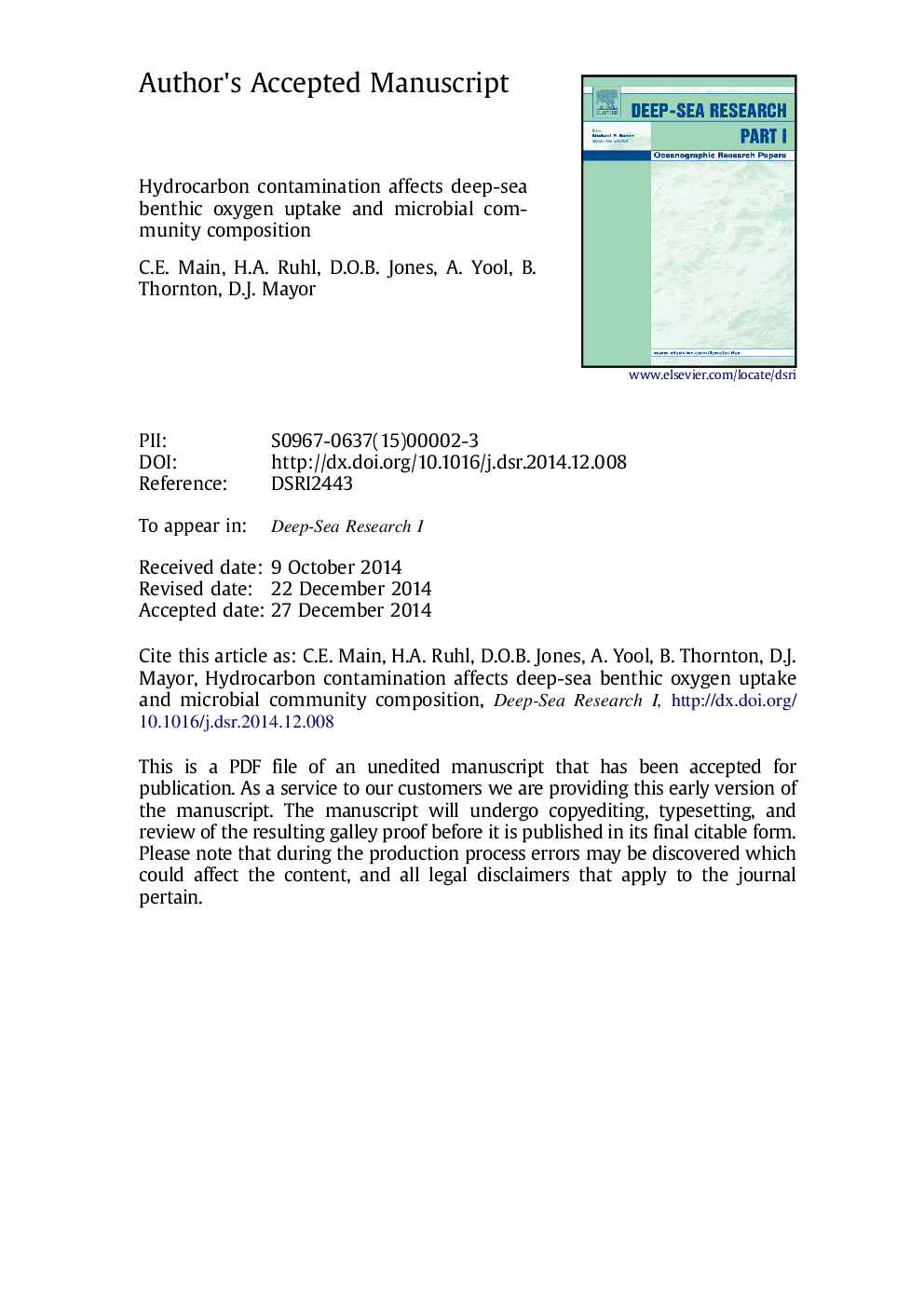| Article ID | Journal | Published Year | Pages | File Type |
|---|---|---|---|---|
| 6383454 | Deep Sea Research Part I: Oceanographic Research Papers | 2015 | 27 Pages |
Abstract
Accidental oil well blowouts have the potential to introduce large quantities of hydrocarbons into the deep sea and disperse toxic contaminants to midwater and seafloor areas over ocean-basin scales. Our ability to assess the environmental impacts of these events is currently impaired by our limited understanding of how resident communities are affected. This study examined how two treatment levels of a water accommodated fraction of crude oil affected the oxygen consumption rate of a natural, deep-sea benthic community. We also investigated the resident microbial community's response to hydrocarbon contamination through quantification of phospholipid fatty acids (PLFAs) and their stable carbon isotope (δ13C) values. Sediment community oxygen consumption rates increased significantly in response to increasing levels of contamination in the overlying water of oil-treated microcosms, and bacterial biomass decreased significantly in the presence of oil. Multivariate ordination of PLFA compositional (mol%) data showed that the structure of the microbial community changed in response to hydrocarbon contamination. However, treatment effects on the δ13C values of individual PLFAs were not statistically significant. Our data demonstrate that deep-sea benthic microbes respond to hydrocarbon exposure within 36 h.
Related Topics
Physical Sciences and Engineering
Earth and Planetary Sciences
Geology
Authors
C.E. Main, H.A. Ruhl, D.O.B. Jones, A. Yool, B. Thornton, D.J. Mayor,
